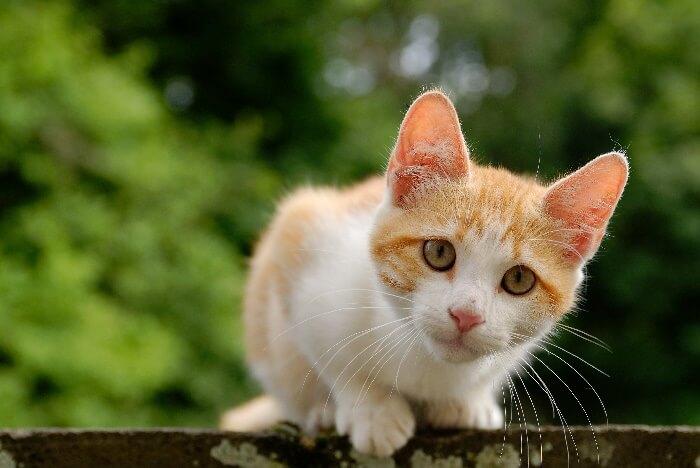
Shutterstock.com
Even if they prefer to avoid direct contact, feral cats can benefit from having a helping human hand. Feral cats don’t have access to the same resources as house cats, so their diets are often less than perfect. Whether you’re the caregiver of a feral cat colony or simply looking to help out a neighborhood stray, the right food can make all the difference.
Caring for one cat can be expensive, let alone a whole colony. In this guide, we’ll cover the nutritional needs of feral cats and the challenges involved in their care. We’ll also provide our top picks for the best cat food for feral cats.
At a Glance: Our Top Picks for Best Food for Feeding Feral Cats




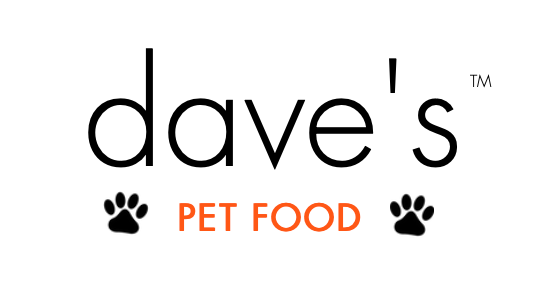
Dave’s Pet Food Naturally Healthy Grain-Free Chicken Formula Canned Cat Food
- Primarily a meat-based recipe
- Rich in hydrating moisture from flavorful chicken broth
- Doesn’t contain any artificial additives

Wellness Complete Health Pate Chicken Entree Grain-Free Canned Cat Food
- First three ingredients are animal proteins
- Rich in moisture to support hydration
- Free from carrageenan

Kirkland Signature Variety Pack Paté Wet Cat Food
- Top four ingredients are animal-sourced
- Rich in hydrating moisture
- Sold in a variety pack of three flavors
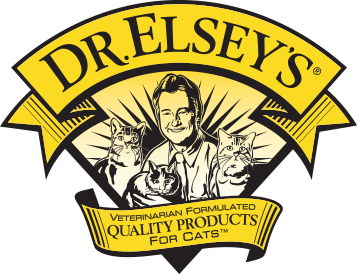
Dr. Elsey’s cleanprotein Chicken Formula Grain-Free Dry Cat Food
- Rich in animal-sourced protein and fat
- Very low carbohydrate content for a dry food
- Free from artificial colors, flavors, and preservatives
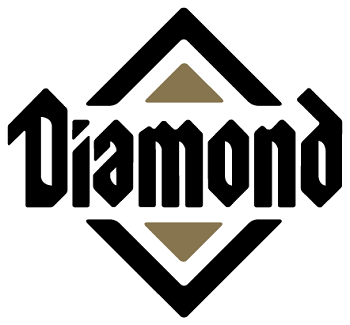
Diamond Naturals Active Chicken Meal & Rice Formula Dry Cat Food
- Relies on animal-sourced protein and fat
- Supplemented with probiotics for digestive support
- Free from artificial colors, flavors, and preservatives

Kirkland Signature Maintenance Cat Chicken & Rice Formula Dry Cat Food
- Relies on animal-sourced protein and fat
- Free from artificial additives
- Supplemented with probiotics
Meeting the Nutritional Needs of Feral Cats
Whether they live on the streets or in a cushy condo, all cats have the same nutritional needs. Cats are obligate carnivores—their bodies are designed to process meat. Protein is the priority in any feline diet but it should be balanced with fat as a concentrated source of energy and essential fatty acids.
Commercial cat foods are considered nutritionally complete if they contain at least 26% dry matter protein for adult cat foods and at least 30% for kitten foods. The minimum recommended dietary fat intake for all cats is 9% (measured as dry matter). Wild feline diets, however, contain closer to 40% dry matter protein and 30% dry matter fat.
While higher concentrations of protein and fat can benefit most cats, they’re particularly important for feral cats. When every meal is a struggle, it is essential to maximize the calorie and nutritional content of each meal. But high-protein cat foods are pricey. To find a cat food that provides decent nutrition at an affordable price point, stick with simple recipes made with nutritious but affordable ingredients.
Why Trust Cats.com
Having spent the past four years analyzing and reviewing cat food, I’ve evaluated countless products. With the help of my three cats, I’ve also personally tested many of them. To write this guide, I researched the nutritional requirements of feral cats and consulted veterinary experts to determine what qualities to prioritize with my picks.
To review the products featured here, I purchased the products at full retail price and subjected them to in-home testing. My cats provided their opinions on taste and general appeal while I made observations about the food’s appearance, texture, consistency, smell, and packaging.
The Top 6 Cat Foods To Feed Feral Cats
Our top pick for feeding feral cats is Nulo Freestyle Turkey & Chicken Recipe canned cat food. Featuring animal-sourced protein and fat, this recipe is sold in large 12.5-ounce cans with additional bundle savings available on Chewy.
We consider a variety of factors when determining our rankings. While Nulo Freestyle is listed as our top pick, it may not be the right choice for every situation. To help you find the best cat food for your needs, we’ve assembled a list of options broken down by food type, price, and other key considerations.
What To Look for When Shopping for Food for Feral Cats
The best food for feral cats is one that is nutritionally balanced but still affordable. Animal-based proteins and fats should be a priority, but digestibility is important as well. Beneficial supplements like chelated minerals and probiotics are a bonus, but if you’re shopping by price, you may need to set them aside. Here’s what to look for in cat food for feral cats.
1. Animal-Based Sources of Protein and Fat
Meat-based foods are more biologically valuable for cats, so look for a recipe with animal-sourced ingredients at the top of the list. Chicken is generally the most affordable protein option for cat food, though many budget-friendly cat foods contain a blend of proteins. Animal protein is the top priority, but animal-sourced fats like chicken fat and salmon oil are a close second.
2. Limited Carbohydrate Content
Swapping expensive proteins for carbohydrates helps reduce the cost of cat food. Though animal ingredients are preferable, cats have a limited ability to derive nutrition from plants. The key is to ensure digestibility and balance the carbohydrate and protein content.
Whole grains and low-starch vegetables are more digestible and nutritionally valuable for cats than peas, beans, and legumes. So, a “chicken and rice” recipe is preferable to a “chicken and peas” formula. Just aim to keep the carbohydrate content as low as possible. Carb content under 10% is ideal for cats, but you may need to go as high as 30% to balance the cost.
3. High Moisture Content, If Possible
Because cats don’t tend to drink a lot of water on their own, high-moisture diets are ideal. Unfortunately, wet food tends to be more expensive than dry food. If you have some wiggle room in your budget, consider alternating between wet and dry food. Keep in mind, however, that wet food spoils much more quickly. It may not be a practical choice in warmer climates.
Another way to maximize your quality-to-price ratio is to buy in bulk. Online pet food retailers like Chewy offer competitive prices with additional savings for automatic shipments. You can also find decent-quality cat food in bulk at big box stores like Costco and Sam’s Club.
Frequently Asked Questions
Is it okay to feed feral cats dry food?
Though wet cat food is generally preferable, it’s not always a practical choice for feeding feral cats. Not only does dry food last longer outdoors, but it tends to be more calorie-dense. A few tablespoons of dry food will go further toward meeting a feral cat’s energy and nutrient requirements than a similar portion of wet food. Dry food is also less likely to attract pests.
How many times a day should you feed a feral cat?
Feed feral cats once or twice a day, aiming to feed them around the same time each day. It’s best to feed feral cats during the daytime to prevent nocturnal animals like raccoons and opossums from getting at the food. Morning and afternoon feedings are best.
Do feral cats remember who feeds them?
Cats are creatures of habit, so if you offer food daily in the same location, feral cats will catch on quickly. Keep in mind that most feral cats prefer to avoid human contact, so they may wait until you leave to eat the food.

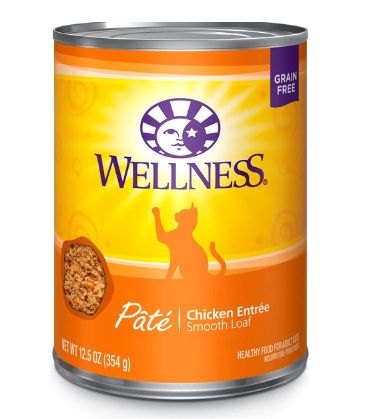
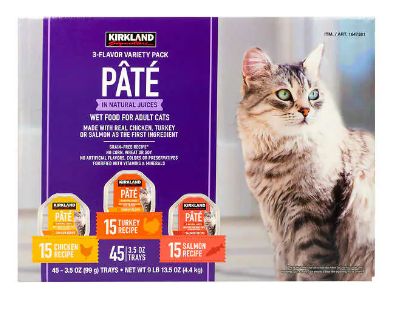
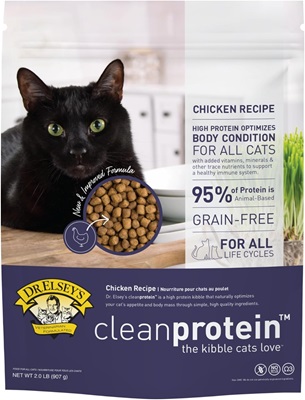
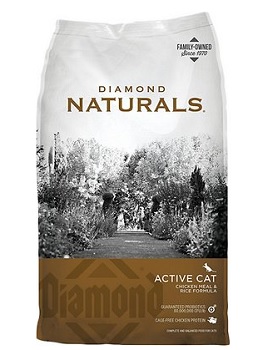
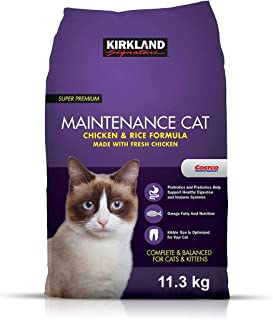

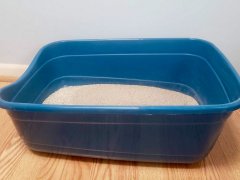
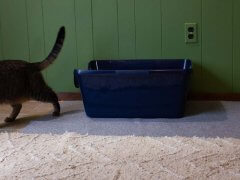
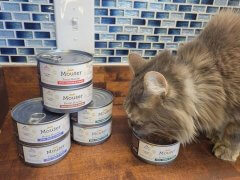
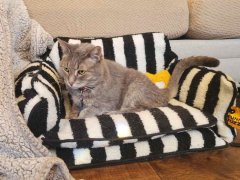

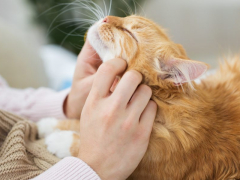


Check the price for Costco, the 25 lb bag is under $20
Best bang for the $ and cats love it
Lol! Totally hilarious that some wackos on this site are actually accusing those of us who feed ferals high quality dry food with plenty of fresh water of animal abuse.???
Although the Kirkland cat is a good deal …
“Be carful “- I have found pieces of glass, wood and a penny in my food bag. I did notice Kirkland about this.
For me—I’ll “never” buy that food again!
I see it is over $40 on Amazon, maybe it has gone up?
Dear Ms. Barrington,
I must disagree with some of the information in this article. As you state, cat are obligatory carnivores and lack certain enzymes needed to process carbohydrates. A healthy cat should ingest less than 10% of its calories from carbohydrates, with protein accounting for 50% of its calories (not the 26% you cite) and fat accounting for about 40% of its calories.
You also do not mention that cats get 90% of their water from their food, and that dry food contributes to dehydration. Although feeding ferals wet food is more expensive and problematical when the temperature is below freezing. Even so, my ferals get Triumph wet food, it has slightly higher fat content which as you state is good for an outdoor cat. When they must get dry food, I use Wysong Epigen (not Epigen 90) which is 60% protien and less than 15% carbohydrates although it is low in fat. It is however about 3 times the cost of other dry foods you list. But I find that a healthier diet means healthier colony so less vet bills.
The numbers I cite come from articles various veterinary journals. Some of which were authored by Dr. Jacquie Rand of the University of Queensland School of Veterinary Science and an expert in feline diabetes.
Would you consider sharing where you obtained the information in you article because if there is new research I would love to know as I am always looking to improve the health of my cats, indoors (I have 5) and outdoors.
Thank you for your time and I appreciate your efforts ot help others learn about cat nutrition.
Dear Ms. Barrington,
As a “Kitty Rescuer” I Feed and TNR (Trap, Neuter, & Return) Feral Cats. I appreciated your article, “What is the Best Food for Feeding Feral Cats?” and I feed Costco/Kirkland Dry Food. I’d like to inform/correct you, that you listed the “Online” Price for 25 lb. Bag – of $29.99, however, the SAME BAG can be purchased AT Costco Stores for ONLY $19.99!
You might wish to inform your readers of this.
Thank You!
Donna
Hi Donna,
Thank you for pointing that out, it’s listed at the correct price
Purrs,
Pedro
These are all good options as far as dry food, but unfortunately, dry food is by definition high in carbohydrates and water-depleted, neither of which is ideal for cats. Wet food does the best job of mimicking cats’ natural prey and therefore provides the best nutrition. We’d love to see an article about choosing the best affordable wet food for community cats — brands that contain about 70% water (like the body of a mouse) and with animal protein making up the largest percentage of calories, followed by fat, and with carbs making up 10% or less of calories. Dry food is great for supplemental feeding, especially in freezing temperatures, but we encourage community cat caretakers to include wet food in their colonies’ diets.
GREAT INFO FOR MY OUTSIDE CATS, MEOW!!!!
Thank you so much for advocating for wet food for all cats, and pointing out the dangers of dry feeding. Ferals are as deserving, if not more so, of being given food that is not going to harm them. Even with a water source, indoor cats will sooner than later have significant serious health issues fed dry, because no amount of water drinking makes up for the dehydration. Plus, the nutritional content of dry is abysmal. For ferals, with little access to water, giving dry food is abuse.
Is it alright to give feral cats milk
Hi James, great question! While cats do tend to love milk, many unfortunately have trouble digesting it. A nutritionally balanced cat food is best but if you’re looking for a liquid option, consider goat milk – it doesn’t cause diarrhea or digestive upset in cats like cow’s milk does. You can even purchase dried goat milk and mix it up yourself as an economical option.
Hi James, you can learn more about the safety of milk for cats in this article: https://cats.com/is-milk-good-for-cats
Hi James, I have given my cats milk on occasion. You can get special cat milk in little juice-box like cartons or goats milk. I have seen people also use Lactaid, which is lactose-free milk.
I HOPE if the author has house cats she is not feeding them this stuff that she is recommending for ferals! NO cat should have to eat dry food but I understand if that has to be resorted to to feed ferals since they are outside. All commercial cat food is pretty much crap, since the idea behind it is profit for the manufacturer and not the good health of your cat. I have never fed dry food to my cats but I intend now to go over towards feeding them a homemade diet which actually works out to be cheaper and of course better because then you give them only good ingredients that they need and not extra filler crap.
I do not have feral cats, I have more than my fair share of house cats, but I think I would do a homemade diet for ferals also, because you make up a batch of it and freeze it in portions, and I think it could be used as a high quality supplement to dry food for ferals.
Be careful with your homemade recipe and make sure that you are providing proper nutrients. Many people think homemade is better, but they don’t research nutritional needs for cats. They need taurine to survive. A good place to find out information on nutritional needs is catinfo.org
Yes a friend was doing homemade and didn’t give enough taurine and the cat went blind!
Wonderful reply. Dry food is harmful and should be banned. Fresh raw homemade is the way to go!
Commercial cat foods have been researched for years and years to make sure they contain all the nutrients a cat needs for good health. Having said that, I feed ferals a mixed diet of dry and canned. That way they get the needed nutrients along with a healthy supply of water from the canned. More than one of my cats that I’ve had lifelong have lived on a sole diet of dry cat food and lived long, healthy lives. So have my dogs. In all my years of owning dogs and cats, I’ve only had one dog that died an early death due to diabetes and a stroke and she was a poorly bred puppy mill dog. All of my cats have lived to at least 15 years of age, and most longer than that. Most of them have never been sick at all until the very end of life, so I think their dry food diet has served them well.
This is unrealistic. I feed 4 different colonies of cats, each colony has at least 8 cats and I pay for it out of my own pocket, plus I have 3 dogs at home. How do you think I can afford to make food for each colony? Money does not grow on trees.
Well, I think what they are saying here is that if you’re going to do something do it to the best of your ability. That’s not a direct attack on you as your hands are full and we can appreciate that. But, at the end of the day these babies need what they need and if it’s too much for your pocket you can CHOOSE NOT to do or just do what you can. That simple!
What do you feed your ferals Angie?
I’ve been feeding 2 feral mom cats and 2 set’s of there kittens,now one is pregnant again. I am not going to be able to afford to keep feeding them so what can I do to help them. I also have 2small dogs to feed.
I took in one male stray two yrs ago. Now I have 7! I recently had a trapper trap them, fix them free, and of course, they had to come back to me, because there isn’t room anywhere for them. So now I”m feeding 7 cats. It does get expensive if we feed them correctly. I’m liking the idea of homemade and could probably be done less expensive and better for them. I will research what their requirements are.
I was writing to tell Riki to check her local trappers. They will come trap, spay and return to you. If not, you will have 7 cats soon too. I had three kittens they fixed too, all females. I thought they were too young, but as long as they are a certain weight, they do it.
I’m a dog person, but now I’ve inherited all these cats, that are feral, and are just there, stinking up everything. But I will do right by them as much as I can since it is my nature to take care of the “wildlife” in whatever form I can. Feral cats are an issue to your neighbors as well, so ppl,, get your feral fixed. There are programs out there to help us, use them while they are still available. If not fixed, they are a nuisance to everyone in your area.
I am feeding a feral cat who lives on my porch. Unfortunately he got used to the quality wet foods my indoor cat eats, like Fussie Cat and Health Extensions. Now, for some reason, he eats nothing but still comes to the door to complain. I open can after can for him, and it is costing me dollars a day. I wish he’d go back to dry foods. I don’t know what to give him any more and I know he is unhappy.
If it’s only 1 cat, why not feed him the same food like your home cats?
What about Purina Cat Chow Naturals plus vitiams and minerals????
Unfortunately if you feed many colonies, and tens of cats every day, the prices of the recommended dry food, except Costco, is to high. Other brands make the dru food with a lit if grain which cats don’t have and enzyme to digest it, and over time get sick. Why is the FDA letting produce trash like this? Also, to make the cats easier to eat, I mix dry food with can food.
I feed 22 feral cats. I buy 35 lb. Bags of special kitty dry food at Walmart. They love it. It cost 14.95 for 35 lbs.
You can’t go by how much they love it. Manufacturers spray flavoring on food that other wise doesn’t taste like much to make it palitable to our pets. People love the taste of McDonalds too but shouldn’t eat it everyday. The first two ingredients are corn. And it has a low quality meat source. What is the percent of protein? It’s not listed on the item info page on Walmart’s website.
Christine… I just wrote about that same food. And I could not think of the word but that food caused one of my ferals to not be able to pee. I read online that the WalMart food causes male cats’ penises to become calcified. It cost me $950 for a feral cat and that was cheapest surgery I could find. Other vets wanted thousands.
I use special Kitty too but I soak it in a little water. Have you tried that?
Hi, I do not “own” a cat but daily feed 13. Funny considering most are black. 13 and black and I wonder my bad luck? JUST KIDDING. I learned the hard way about cheap food. I was feeding WalMart brand for cost factor and spent $950 for a male cat with a c penis. He was rewired and now pees like a girl.
Anyway… I tried raw and too much work and worried about balance. I read that you can supplement a cheaper dry food with a freshly ground, raw, chuck steak. I have also started on daily diatamaetious earth (human grade) to deworm them all. My question, before I get my calculator out, might anyone know how much D.E. per pound of dry food? And raw pumpkin seeds ground up too. But that is going into the beef.
C stands for calcified. I could not remember.
Per scientific studies – DE has not been proven to be an effective dewormer. It works to kill fleas for example, by getting into the exoskeleton of a parasite and causing dehydration. A lot of the DE must get on the insect for this to happen. When the DE is wet, it looses it’s effectiveness. In addition, when ingested it is highly unlikely enough would make it through the intestines to attached to the microscopic larvae. And if you did feed enough, you would potentially cause irritation/lesions to the cat’s digestive tract.
All of this information somehow dismissed the fact that nature is much more intelligent and cats themselves are guided to by it to appropriate nutrition they need. Feral cats hunt. So no we dont need to think them helpless . I feed ferals who visit my property but i also trust they can hunt and provide what they need for themselves as they are built to do. Humans have the arrogance to think if dont interfer other animals are ‘abandoned’ , what a silly way to project inner abnadonment issues on other animals who absolutely know what they are doing. They are intelligent sentient beings too who are connected to mother nature and other animals much better than we do. I say feed them what you can. Also trust they are fine. They will be provided for since they can hunt. If a cat is old cannot hunt or injured its another issue. You cannot assume they are all helpless. That does not make sense. We need to learn to trust the way nature functions.
I too feed a feral cat colony, wet & dry , plenty of water , I have 3 generations, even TNR , although it’s said not supposed to be, some renegade cats slip in . I swear by diatomaceous earth , also sprinkle it where my cats gather as well as on coats of the ferals that allow me to , kills fleas & ticks on coat as well as internal parasites when ingested, be sure to provide plenty fresh h2o , always mix throughly with moist food , never feed D.E to any animal dry
Wow! Awesome! Hell, I’ve been swearing by D.E. also for pest control but now I have a new use for it! Great! I. Just starting out as a care giver to free roamers my one house baby was once a free roamer as well! We ha e cared for her for little over 10 yrs now! Thank you all for such wonderful information. Unfortunately, I’m disabled so financially strapped but doing what I can with what I have! Thanks to everyone!
Laura
This is so helpful! I’ve helped to feed feral cats in the past and always wondered about the best food to get for the price. Thanks for going into their nutritional needs too, makes perfect sense!
Can you mix the dry with wet? If so, what wet food? I don’t have a lot of money so less expensive would be better. Also, what type of housing do you have for your feral’s? I live in Wisconsin so the winters are brutal.
It would be really nice if someone, who knows all the facts and nutritional requirements hands down, trustworthy ya know, reputable…could put together a few “how to” and step by step recipes for making raw for specifically for outdoor cats. Maybe it’s the same recipe for indoor but I thought maybe they could figure out if there’s additional things you could add to it that would help outdoor ferals AND most importantly how to make a recipe in large batches, the healthiest you can make but save a lot of money. I would love to feed my ferals raw food but think in that quantity it would really break me. Any ideas anyone? Thanks!
Hi Melody,
This is a great idea.
We’ll get to work on creating a recipe book for this.
Purrs,
We love on a hotel and there are at least ,,4 or 5 strays we feed. They are also our resident bug catchers. Is a dry cat food called kit and kibble ok for them?
Hello Ross and Lori,
I think you’re referring to “Kit and Kaboodle.” If you are, in my opinion, it’s a really low quality food with very problematical ingredients. Hope you’re able to find something better that’s still affordable for your.
Thank you so much for taking care of the strays❤️
I feed over 100 ferals daily at about 30 colonies. Unless I’m using donations I feed them Kit and Kaboodle. There’s no way I could afford Blue Buffalo and other more expensive brand’s.
It might not be fancy but it has the same percentage of protein, carbs, etc. as the other brand’s. The cats like it and they’re all in good shape with shiny coats.
Hi Jane, good insight. Thank you for sharing.
Kit & Kaboodle is one the lowest quality foods you can buy and it’s unfortunate it’s allowed to be sold at all 🙁 A ton of by products, fillers, coloring, low quality protein source, etc. Even Purina Cat Chow is a step up if you can afford it.
Good info. True i feed my ferals cause i real y care, it does get expensive. Love to know what can i add to the food to make it more nutritional. They live outside and i know they need supplements but dont know do give. I mix dry and wet. Some are picky! I do a can of friskies with a little bit of kibble meao mix.
Ok, i wanted to ask something. A new stray showed Up today, very skinny and friendly. Looks very hungry but just nibbled a bit. Gave it some warm chicken, only took one little piece. Then tuna, nothing, then Warmed Up some shredded can food…nothing. She sounds congested, but i really cant afford taking her to a vet. ?
She has a URI and once cats cannot smell they will not eat she will end up starving herself she needs a humidifier, antibiotic and lysine
I feed ferals and have for years, in western NY. I have a heated water dish and bought a two-dish heated unit with rmovable stainless bowls and I put canned food in there in winter and it stays thawed enough on the bottom to be able to eaten if it’s not 0 degrees out. I also leave dry food out. The rest of the year I put a plate of canned out with a bowl of dry and water and that’s what they get. I also mix brands of dry food in a bin so there’s not just one source. I rotate things. I use a less expensive (but good quality dry) mixed with a high quality (more expensive) dry. Sometimes three or four different dry foods mixed. Canned I buy several varieties and each meal includes at least two or three different foods. Summer is problematic with wet food as flies lay eggs in it if it’s not eaten quickly and it goes to waste.
Someone mentioned raw food. I feed my indoor and occasionally the outdoor cats a mix of canned and raw. TC Feline (google) is a good place to start, as a mix with raw boneless chicken, using a food processor, if you dn’t want to be grinding bones and meat and adding the vitamins, minerals and taurine, etc. yourself.
Hi
Am happy to have found your comment I too have feral colony and always wondered how well the heated dishes hold up. Would you mind telling me which brand you use? Winter is brutal as you know.
Also, I feed several brands of dry, less expensive.
Which of the more expensive dry foods do you use?
And besides Friskies, what other canned foods do you suggest?
TYSM
Appreciate your time and help,
Bonnie
Someone dumped 3 cats. Mommy and 2 kittens. I make my own chicken broth every Sunday. Can I take a dry food and mix the chicken broth to make a consistency like can food and I give them the skin
I feed my feral, Dumbledore, mostly wet (PetGuard brand) daily, with some blue buffalo dry every few days. I often add some PetGuard yeast & garlic powder to the wet ( it has vitamins, minerals, etc). I’ll throw in some fish or meat scraps when I have them. Sometimes I think he eats better than my once feral kittens, now very comfortable house cats, Hansel & Gretel!
I have read that garlic is toxic for cats. There are so many conflicting articles and blogs on cat foods. Why is that!
Enjoyed reading your article. i learned a lot about how to feed my feral cats. Thank you for sharing your expertise.
Our kitty community has flourished on Friskies cans and dry for a long time (5+). Being a purist for my in house cats I wouldn’t make it their diet, but the “proof is in the pudding”. These fur babies look good and seem quite fit.
I’m feeding my feral dry blue wilderness with chicken, is this a good choice. Someone dropped me off two cans of wet Royal Canin KITTEN, which I fed them along with the dry, they seemed to love it. Can I add the wet canned food to their diet on occasion, and would the KITTEN type be okay, as I’m assuming it has extra nutrients for outside cats. Also is there any glee meds I can add to their food to keep them comfortable this summer
Hey JoAnne, great question! It shouldn’t be a problem to add some kitten food to the dry food since it’s generally higher in fat and protein. As for the meds, are you asking about flea meds? There are oral treatment options, but they usually come in tablet form. You’d need to give it to each cat individually, however. If you crushed it into the food you’d have a hard time making sure the cats got the right dosage.
Thank you for reviewing foods for feral cats on a site that is geared more toward domestic cat owners. It’s hard to get information on the unique nutritional needs of feral cats. I live in N.E. OHIO and it’s started to snow with windchills in teens at night. I have a resident feral cat on my apartment patio that is in a wooded community atop of a large retail plaza. I had another sweet feral furbaby reside on my patio for 3 years, however, she was FIV +, and she wandered off to die last October. All efforts to find her were unsuccessful, and based on her behavior patterns, I knew being gone after a week, she was too Ill. I fed them both wet food but heated it up in the microwave in the winter. I’d put a bit of dry food in it that my 3 cats eat. But then I learned about an organization called “ Alley Cat Allies” and was able to find local resources on just about everything about feral cats through their “Feral Friends Network”. I was able to do TNR last December, learn how to trap, connect with a colony caretaker in the retail plaza below me, and so much more. Neighborhood Cats has also been a great resource. And a shout out to “Cat Man Chris” , owner of “Cole and Marmelade” on YouTube. I learned through him that there are companies, like Weruva, that will help you feed feral cats. Chewy is a great resource, too. If you are an autosubscriber, you have free access to their “Ask A Vet” chat or video chat. It’s not vet care, but consultation on all things cat. The vets have been very resourceful, too. I’m happy to see that “Wellness” is #1 on your list, though I use the wet food. It comes in 12.5 oz. Cans, yeah, it might cost me $90 a month in the winter, he eats it all, has a warm meal that is good quality and moisture. I have no outdoor electrical outlet, so I’m not able to keep water out or a heated bed., but the K&H does the trick with thermal self-warming pad when positioned in the corner closest to the apartment at a diagonal.. Yeah, there is competition at times from raccoons and opossum, but he defends his territory here pretty well.
Wish me luck. I’m going to transition him over to the outdoor kitty house for the first time this week. I hope he uses it, he’s a beautiful Blue Russian.
I feed 2 of the stray cats living in the basement, one loves dry food but the other one prefers wet food 🙁